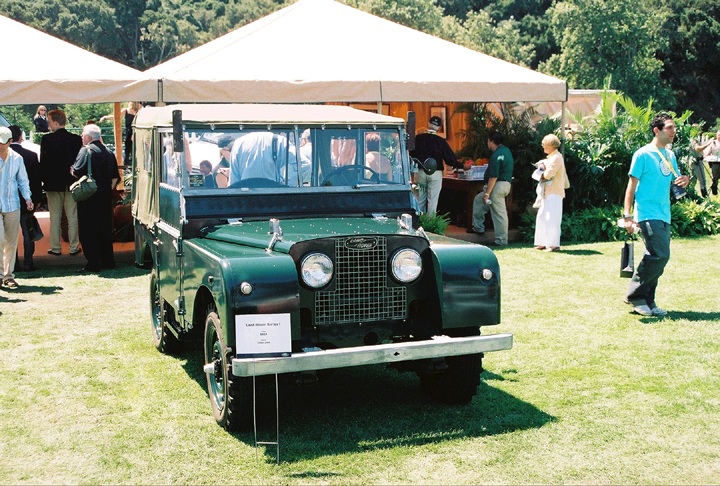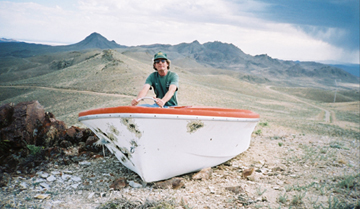Since 1981....
SERVICE
PARTS
ACCESSORIES
FABRICATION
ENGINE CONVERSIONS
RESTORATIONS
We're Second to None!
Home
![]() News
News
Latest
LAND-ROVER Restorations
Rover
Motor Co History
North American Specials
Aston Martin / Historic Photos
Cool LR Photos, THRUST 2, THRUST SSC
Tamed Racing Driver
Updated: 1/2013
Visit our other sites....
www.OffRoadExperience.com
www.westcoastbritishracing.com
this site is protected by Copyright 1981-2012 All Rights Reserved.
1964 Hi-Floatation for Shell Oil
Jim Joss in Canada
Jet-1 1950

80" at Quail Lodge.
?

Boating Nevada style!
It's Not a Christmas Party 2005.
Our Fire Crew 2006!

| West Coast British -
Technical Bulletin 190 Airway Blvd., Livermore, CA. 94551. Phone 925-606-8301/Fax 925-606-8302 Date: July 31, 1987 (revised 11-17-2003) Subject: Base Idle Setting Vehicle: Range Rover 1987 & ’88 Model Required Equipment: Service Manual, 3/16 hex Allen, Lucas Handheld tester. Route idle adjustment during maintenance is not necessary. The bypass air valve (stepper motor) located at the rear of the plenum chamber. This receives signals from the EFI’s ECU and automatically corrects the hot idle speed. Idle range is 665-735 rpm. The use of A/C will raise the idle speed. Owners complaints of “surging”, “excessive high or low”, or even “hesitation” can be traced to one of the following: A) Incorrect throttle plate/lever position. B) Throttle potentiometer adjust (on the early cars it was adjustable, replacement unit is not). C) Incorrect throttle cable adjustment. D) Defective/disconnected road speed transducer. E) Ignition Timing (or failed Vacuum Advance and/or seized Mechanical Advance unit). F) Vacuum Leak(s). G) Fuel pressure (filter clogged or pump failure). H) Crankcase venting (dipstick o-ring failed, or oil filler cap and/or vent o-ring failed). I) Defective Stepper Motor. J) Carbon build up in throttle housing, breather hoses, etc. K) Poor engine condition (compression low, valve hung open from carbon or bent, flat camshaft, etc). If all else fails, Base Idle should be re-set EXACTLY as shown. RRNA (LRNA) warns. “DO NOT attempt this procedure unless the basic throttle/timing/potentiometer adjustments have been made (see Workshop Manual Section 19)”. 1) Engine must be at full operating temperature. 2) Remove the blanking plug located on the throttle housing (punch 1/8” hole and use a sheet metal screw to remove plug). 3) Switch ignition ON – DO NOT START ENGINE. 4) Disconnect Stepper Motor. 5) Switch Ignition OFF. 6) Listen for EFI Relay to click (it’s under passenger seat). 7) Reconnect Stepper Motor. 8) Switch Ignition ON – DO NOT START ENGINE. 9) Disconnect Stepper Motor. 10) Start ENGINE in neutral (without touch throttle). 11) Adjust IDLE using the 3/16” Allen Hex to 550-650 rpm (turn counter clockwise to INCREASE idle). 12) Reconnect Stepper Motor. 13) Switch Ignition OFF. 14) Listen for EFI Rely to click. 15) Start ENGINE and Rev briefly to 2000 rpm. 16) Idle should stabilize at 665-735 rpm. 17) Fit new tamper proof plug (Part# ERC255). Originally issued by: Service Department, Range Rover of North America Inc. 4390 Parliament Place, P.O. Box 1503, Lanham, Maryland. 20706. On July 6, 1987, Bulletin# 87-033, Section: Product. |
| Back to Technical Bulletin main page |





